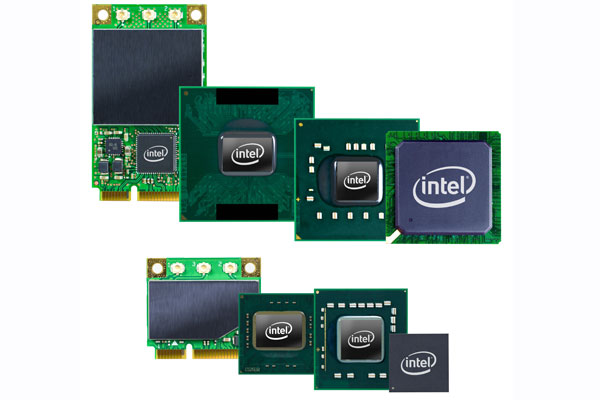IDF 2008: Fact sheet: Intel's Nehalem architecture
Intel promises “screaming performance” and energy efficiency at the same time with Nehalem


What is Nehalem?
It's the architecture for Intel's next-generation family of processors, the successor to Intel's current Core 2 Duo chips.
Intel can mix and match components on the Nehalem CPU so that processors will have two, four, six or eight cores, running two threads per core, and connected to each other and to the memory and chipset by QuickPath.
QuickPath has three times the memory bandwidth of existing chips, allowing Intel to build the chipset and memory controller inside the CPU, along with a third cache.
But Nehalem promises more than just a performance boost: it is also more energy efficient than current designs. When the system switches off a processor core that is not being used to run an application, it can be turned off completely, without power "leaking" into it. This allows Nehalem to use full power for demanding applications, save power when for running simple apps or divert power to the cores that are running programs to make them run faster.
Applications have to request the extra power but the mechanism for that is already built into Windows, so it works with existing programs. Running memory at low power creates errors, so Intel has added built-in error correction.
When will the chips arrive?
Get the ITPro daily newsletter
Sign up today and you will receive a free copy of our Future Focus 2025 report - the leading guidance on AI, cybersecurity and other IT challenges as per 700+ senior executives
The first Nehalem chips will be the four-core Core i7 for high-end desktops. These will arrive in machines in Q4 of this year, along with Nehalem-EP server processors that will support up to 288GB of memory. An eight-core server version and other desktop chips will follow in the second half of 2009, along with versions for notebook PCs.
Why should you care about Nehalem?
Intel alternately improves the manufacturing process for existing processors and then develops new processors using the now-proven process.
Nehalem is a new processor and is designed to work with new technology, from virtual IO to DDR 3 RAM. Processors are struggling to run any faster, battery technology is improving very slowly and heat and power bills are problems for servers. If Nehalem delivers the promise of a balance between energy efficiency and improved performance it will mean users will not have to choose between low power and high performance when they buy a server or notebook. The system will handle both, depending on what you ask it to run.
The technical view
Rajesh Kumar, director of circuit and low power technologies at Intel, says: "High performance and energy efficiency are not necessary exclusive; if you innovate enough it's possible to get high efficiency and performance at the same time and you can really get big returns if you optimise the system around it.
"We have gone for energy efficient ideas that increase performance. Hyper threading in the cores gives you a big boost in multithreaded performance and power management is a breakthrough in Nehalem. Today we are into talking about mainstream processors but for the future you can think that if you can share power between cores, you can also share power between graphics and cores."
They say:
Nehalem is the dynamically scalable architecture for computing of tomorrow.
We say
You don't get something for nothing, but Nehalem will let you choose between running more applications and having your battery last longer and when you only run a few apps you'll get better performance from them.
Mary is a freelance business technology journalist who has written for the likes of ITPro, CIO, ZDNet, TechRepublic, The New Stack, The Register, and many other online titles, as well as national publications like the Guardian and Financial Times. She has also held editor positions at AOL’s online technology channel, PC Plus, IT Expert, and Program Now. In her career spanning more than three decades, the Oxford University-educated journalist has seen and covered the development of the technology industry through many of its most significant stages.
Mary has experience in almost all areas of technology but specialises in all things Microsoft and has written two books on Windows 8. She also has extensive expertise in consumer hardware and cloud services - mobile phones to mainframes. Aside from reporting on the latest technology news and trends, and developing whitepapers for a range of industry clients, Mary also writes short technology mysteries and publishes them through Amazon.
-
 Westcon-Comstor and Vectra AI launch brace of new channel initiatives
Westcon-Comstor and Vectra AI launch brace of new channel initiativesNews Westcon-Comstor and Vectra AI have announced the launch of two new channel growth initiatives focused on the managed security service provider (MSSP) space and AWS Marketplace.
By Daniel Todd Published
-
 Third time lucky? Microsoft finally begins roll-out of controversial Recall feature
Third time lucky? Microsoft finally begins roll-out of controversial Recall featureNews The Windows Recall feature has been plagued by setbacks and backlash from security professionals
By Emma Woollacott Published